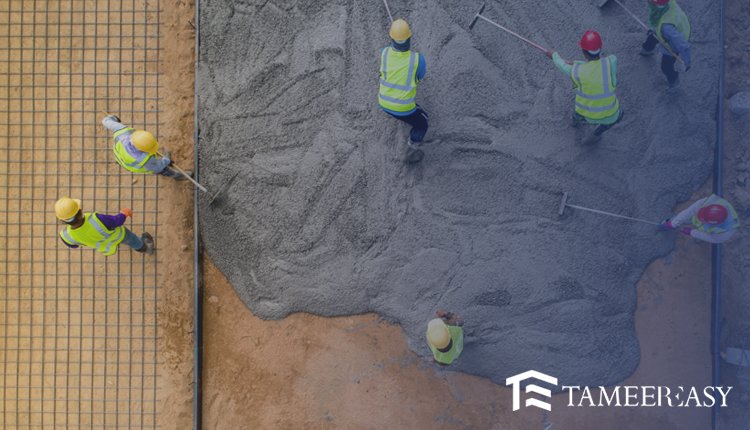The process of putting a concrete slab or lintel while building a house or a building is very tough and the most important part of the construction. Every builder or architect pays more attention to this crucial part during construction. The element of your worry at this step is eliminated when your roof or lintel is properly built. Today we will put an end to your lintel worries forever. Because today we not only discuss this step but also tell you how the lintel is put together and all the techniques of the best lintel.
Visit TameerEasy Store to Purchase Quality Construction Items

What is a Concrete Slab?
A structural element that may serve as a floor or a roof is a concrete slab or lintel, which is typical of constant thickness. The subsoil provides support for a slab-on-ground, which is typically reinforced with welded wire mesh or reinforcing bars. Concrete slabs give a smooth surface and aid in supporting the weight on the walls, beams, columns, and foundations. Any structure needs concrete slabs to sustain it, and if they are defective, your building might have major structural issues.
Types of Slabs
- One-way slab: In this kind of slab, a beam supports the slab on both of its opposing sides to move the weight in one direction.
- Two-way slab: This kind of slab is supported by beams on all sides and can carry weight in both directions.
Process of Putting the Lintel or Concrete Slab
The process of putting a concrete slab in the house is done in three different steps.
- One is to shutter,
- The second is to install the barring or structural iron,
- The third is to lay the concrete
Method of Shuttering
Wooden beams, which are typically 11 to 12 feet long, together with wooden or iron strips covered in tape or aluminum foil, are required for shuttering. Connecting wooden or iron bars to the beams’ support is the shuttering technique. However, you must take care to properly compress the soil where the wooden bars are set to prevent level damage. The beams are then breezed, causing them to divide and disperse the weight of the remaining material. After that, use tape or aluminium foil to make the cracks’ junctions waterproof. So that they won’t flow downward when concrete is poured.


Application of Barring or Structural Iron After Shuttering
For barring or structural iron the ratios are 3 to 4, and the spacing between the structural or bar iron is maintained at 6 to 8. It is knotted using structural iron or barring that has been properly cut; following the tying, bundles are created, and they must be covered by 3/4 from the bottom. The negative steel, which is cut individually and fixed at this level, is then installed on the walls where the linter or slab must arrive. 4.3″ from the top covers the negative steel. It is sometimes referred to as ordinary plastering and is crucial to the design in addition to guarding the roof or lintel against stress cracks.
Step of Pouring Concrete
Keep the concrete mixture ratio at 1:2:4. Then rotate the machine for one minute to mix the material before putting it in a bucket linked to a pole, carrying it to the desired location with a wheelbarrow, and leveling it with Mason claws (shovel). If the shuttering is effective, a vibrator should be used; if not, a wooden mallet should be used. Controlling the cement-to- makes it more efficient. Make sure the thickness is regular as well. If it is uneven, the lintel will weaken and your material will be lost.
Conclusion
The most crucial process in the house is the linter, but do you want a simple fix for this issue? Do you wish to comprehend how a typical linter is made? You can solve every issue in your home using sand, gravel, and cement. There is an easy method to ensure that the money you spend looks excellent and leaves you happy. You can get free access to all of the information about Linter on the Tameereasy platform for homes ranging in size from 3 Marla to 1 Kanal. Visit our website to learn the exact steps involved in the process, from shuttering to concrete pouring.







